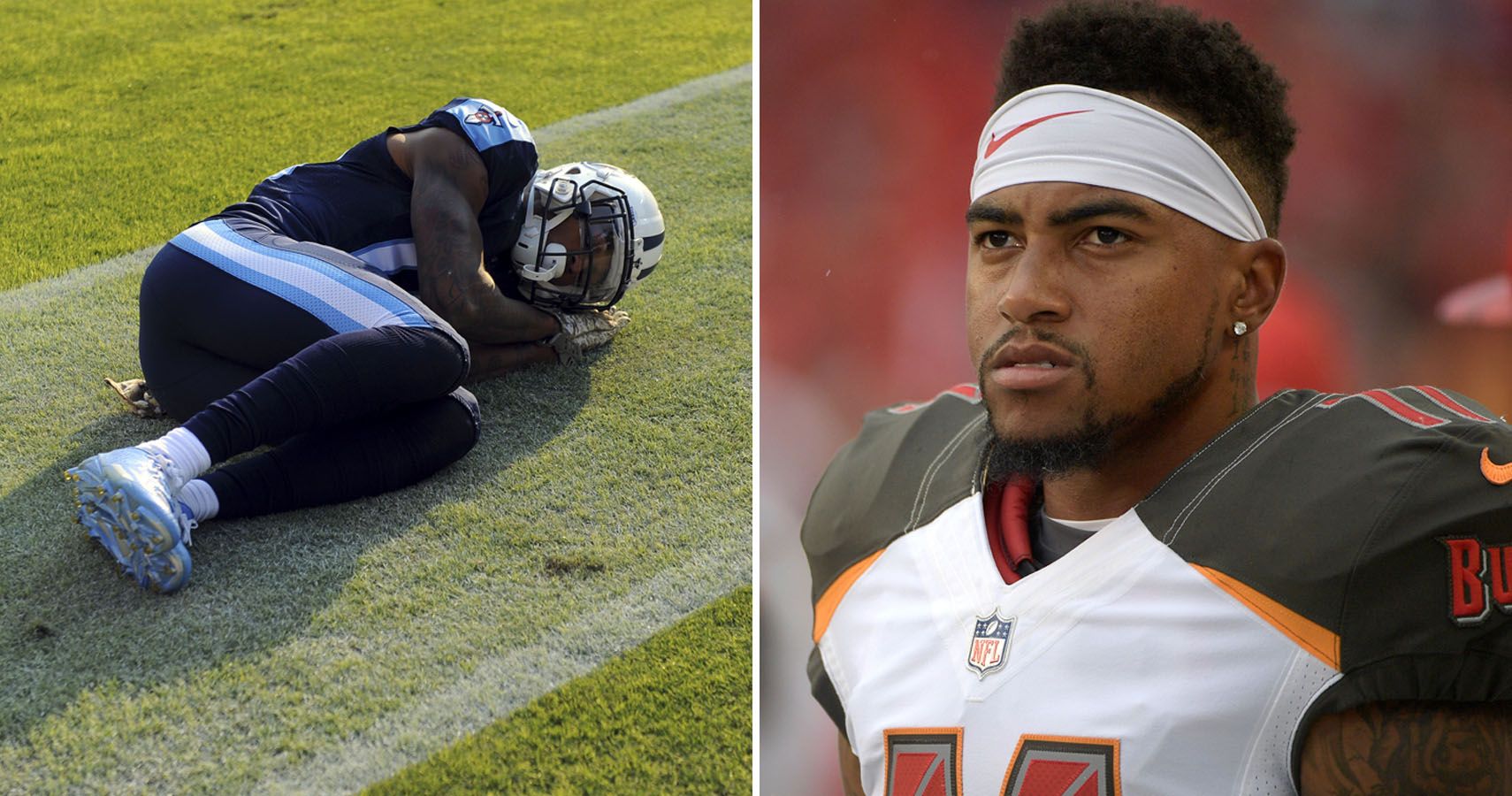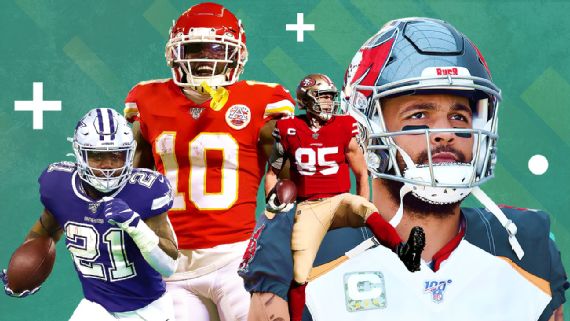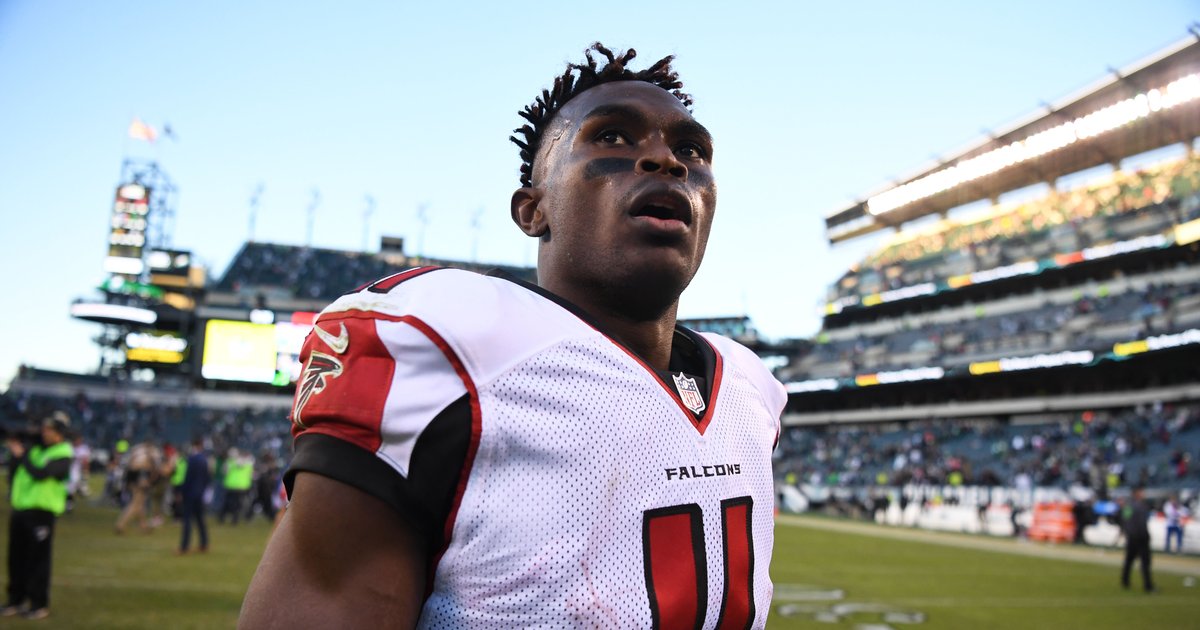Every Teams Slot Receiver
In the 2019 regular and postseason, per Pro Football Focus data, slot receivers regardless of position (receivers, running backs, and tight ends) accounted for 32% of all targets, 31.6% of all receptions, 32.3% of all receiving yardage, and 34.3% of all receiving touchdowns. In a league where the three-receiver set is by far the default formation (it happened on 69% of all snaps last season, per Sports Info Solutions), having a versatile and productive slot receiver is an absolute necessity in the modern passing game.

Moreover, there is no one kind of slot receiver in the modern NFL. It used to be that you wanted the shorter, smaller guy inside, and your bigger, more physical receivers on the outside. Then, offensive coaches started to realize that by putting bigger receivers and tight ends in the slot, you could create mismatches with slower linebackers and smaller slot cornerbacks. Teams countered this by acquiring linebackers built like safeties, eager to do more than just chase after run fits, and also by moving their best cornerbacks into the slot in certain situations.
Now that offensive and defensive coaches have worked hard to create as many schematic and personnel ties in the slot as possible, the best slot receivers are the ones who consistently show the ideal characteristics for the position. These receivers know how to exploit defenders who don’t have a boundary to help them — they’ll create inside and outside position to move the defender where they want him to go. They understand the value and precision of the option route, and how you can hang a defender out to dry with a simple “if this/then that” equation based on coverage rules. They know how to work in concert with their outside receivers to create route combinations which create impossible math problems for defenses. And they know how to get open in quick spaces.
But don’t automatically assume that slot receivers are just taking the dink-and-dunk routes — they’re actually tasked to catch everything from quick slants to vertical stuff down the seam and up the numbers. Last season, per PFF data, the NFL average for yards per completion for outside receivers was 11.28. For slot receivers, it was 11.63. So, over time and based on the play design and the makeup of the receivers, teams could find just that many more yards by throwing to their slot targets.
Every Teams Slot Receiver Rankings
The best slot receivers in the game bring unique and highly valuable traits to the game, and here are the best among them.
More Top 11 lists: Slot defenders Outside cornerbacks Safeties Linebackers Edge defenders Interior defensive linemen Offensive tackles Offensive guards Centers Outside Receivers
For teams with QBs that have enough arm, against cover 4 defenses that like to bracket the single side receiver, this is a really popular way to attack the field safety: Defenses that either want to bracket the single-side receiver in cover 2 or else drop the boundary safety down to stuff the run love to play this coverage against trips formations. Charlie Joiner, a member of the 'Air Coryell' San Diego Chargers teams of the late 1970s and early 1980s, was the first 'slot receiver' to be his team's primary receiver. Wide receivers generally hit their peak between the ages of 23 and 30, with about 80 percent of peak seasons falling within that range according to one study.
Honorable Mentions
Had we dropped the qualifying floor to under 50% slot snaps, two guys would have easily made it — Tampa Bay’s Mike Evans, and Baltimore’s Marquise Goodwin. Evans led all slot receivers with at least 25 targets with a passer rating when targeted of 151.3, and Brown was an absolute force against defenses in the slot — especially when he was using his speed in empty formations.
San Francisco’s Deebo Samuel, who was probably the MVP of the first half of Super Bowl LIV before things started to go backward for his team, would have received a mention as well — Samuel had just 33 targets, but caught 28 of them and helped his quarterback to a 135.3 rating when he was targeted in the slot. Kansas City speed receiver Mecole Hardman had just 23 a lot targets, but he was also highly efficient with them, helping his quarterbacks to a 133.9 rating. Though Danny Amendola was the only Lions receiver to make the 50% threshold, both Marvin Jones and Kenny Golladay were highly efficient when tasked to move inside. Other former slot stars like Tyreek Hill of the Chiefs and Minnesota’s Adam Thielen saw their roles change more to the outside in 2019 from previous seasons.
Every Teams Slot Receiver Bracket

Of the receivers who actually qualified, Nelson Agholor of the Eagles was quietly efficient and had just two drops in the slot last season — which would go against several memes on the subject. Buffalo’s Cole Beasley just missed the cut, through he was one of several receivers on the Bills’ roster who didn’t always get the accuracy and efficiency they deserved from quarterback Josh Allen. And though Randall Cobb was productive for the Cowboys last season and should be so for the Texans in 2020, his nine drops as a slot man… well, we can only have one guy with nine slot drops on this list. More on that in a minute.
Now, on to the top 11.

Willie Snead IV Julian Edelman Tyler Boyd Jared Cook Golden Tate Keenan Allen Larry Fitzgerald Allen Robinson Cooper Kupp Chris Godwin Tyler Lockett
The Miami Dolphins’ wide receiver room is one of the team’s more well established positions. Miami has plenty of size in the group, a fair amount of depth with the likes of Allen Hurns, Albert Wilson, Isaiah Ford and others on the roster and the group finally saw the big breakout the team was hoping for from DeVante Parker.
But Albert Wilson’s status with Miami is up in the air thanks to a sizable cap hit in 2020 and an underwhelming 2019 season. As this Dolphins team looks to remodel to offense to fit offensive coordinator Chan Gailey’s ideals, this team may be looking to find a new starter in the slot.
Who are some of the prime candidates?
Dolphins’ Jakeem Grant
Cost: Nothing
Let’s start with the good: Grant is an explosive athlete, a good route runner and a natural playmaker. The bad? He’s failed to finish the last two seasons with durability concerns and needs limited touches to protect him from breaking down over the course of 16 games.
Grant is a logical choice because he’s on the roster and was recently given an extension. But entrusting him with a primary role is risky business.
Free agent Rashard Higgins
Cost: Short-term “prove it” deal
Higgins found success in 2018 with the Browns before being pushed to the fringes of the team in 2019 — he logged nearly 600 receiving yards in 2018. Higgins’ route running skills are a viable asset and, if he’s left in the slot, he should routinely find separation. The concern here? There’s not a lot of long speed and Miami’s slot will ideally have explosive qualities.
Florida’ Van Jefferson
Cost: 56th/70th pick in the 2020 NFL Draft
Jefferson catches the ball really well in traffic, which will make him an asset in Miami’s horizontal spread attack under Gailey. With a heavy down hill run presence, the Dolphins stand to flourish from putting LBs in a bind and taking advantage of spacing issues to hit the defense over the middle. Jefferson frequently ate as a middle of the field receiver with the Gators and showed off some impressive route running at January’s Senior Bowl.
Arizona State’s Brandon Aiyuk
Cost: 56th pick in the 2020 NFL Draft

Aiyuk thrived at Arizona State as a tunnel screen and in traffic receiver — he’s got a large catch radius, explosive qualities and the ability to force a missed tackle and make house calls in the quick game. He feels like a strong fit for what Miami is looking to do and if the Dolphins feel an early investment is necessary to upgrade the slot, he’s a name that would add another dynamic to the receiver group with his twitchiness.
Dolphins’ Albert Wilson
Cost: Over $10.5M in cap in 2020
Best Slot Receiver
If the Dolphins choose to stand pat, they’ll eat eight figures in cap space, $9.5M of which is easily avoidable by cutting Wilson. But if Miami feels Wilson has a reasonable chance of returning to form and getting the quickness back that he lost after a 2018 hip injury, they have the cap space to eat the money.